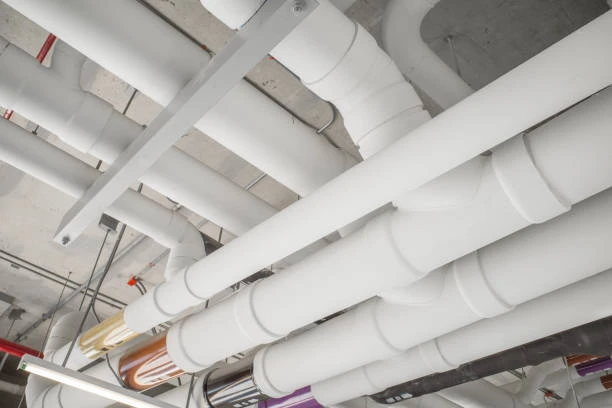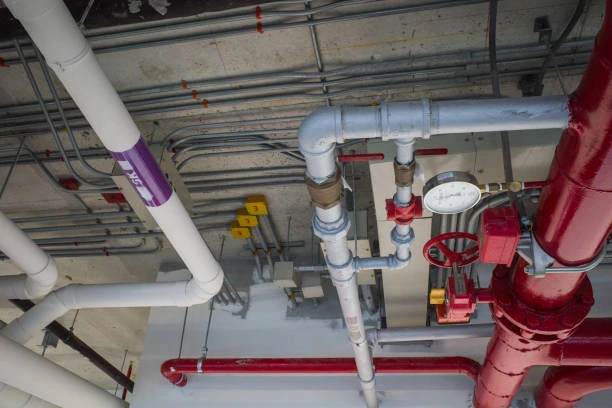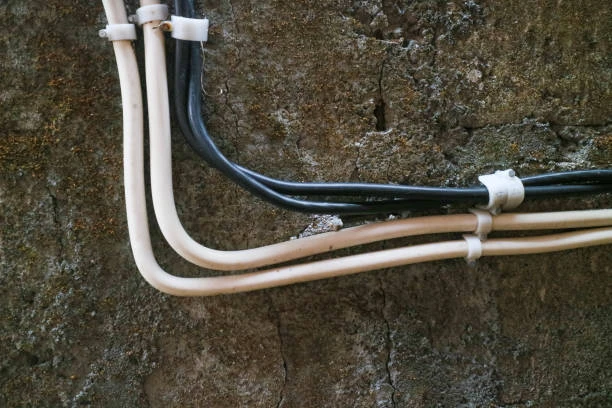Introduction
Efficient water treatment is essential to maintaining safe, clean, and enjoyable swimming pool environments. Central to this process is the control of water flow through filtration systems, softeners, and chemical dosing units. One often overlooked yet critical component in this system is the copper ball valve—especially when integrated into water softener valve assemblies.
Copper ball valves are durable, reliable, and precise, making them a practical choice for controlling water direction, regulating flow rates, and shutting off water lines during pool maintenance. This article explores the vital role of copper ball valves in pool water treatment systems, highlighting their functionality, benefits, and practical applications.
Frequently Asked Questions (FAQ)
1. What is a water softener valve?
A water softener valve is a component that controls the flow of water through a softener system. It manages regeneration cycles and redirects water between service and backwash modes.
2. How do copper ball valves support water softeners in pools?
Copper ball valves offer precise control of water direction. They enable isolation of softening units for service or maintenance and ensure leak-free shut-off when needed.
3. Are copper ball valves compatible with chlorinated pool water?
Yes. Copper and brass alloys commonly used in ball valves resist corrosion from chlorine and other pool treatment chemicals, especially when paired with PTFE seals.
4. Can copper valves be used above and below ground?
Copper ball valves are suitable for both above-ground and protected below-ground installations. However, proper housing or enclosures are recommended in corrosive or high-humidity environments.
5. Are copper ball valves better than plastic ones for pool systems?
In terms of durability, sealing performance, and pressure resistance, copper ball valves typically outperform plastic options, especially in systems involving high temperature or chemical load.
What Is a Copper Ball Valve? Features and Functional Benefits
A copper ball valve is a shut-off device featuring a hollow, perforated sphere that rotates inside a valve body to control fluid flow. Turning the handle by 90 degrees opens or closes the valve.
Key Characteristics:
Material: Made from copper alloys like CW617N or DZR brass
Sealing: PTFE or similar synthetic materials to prevent leakage
Flow Control: Allows smooth, full-bore or reduced-bore flow regulation
Operation: Quarter-turn handle offers fast and easy manual control
Durability: Withstands high pressure and temperature ranges
Corrosion Resistance: Suitable for chemical and chlorinated water environments
These properties make copper ball valves highly effective in water softener valve setups for pool systems, providing safe and dependable control even under prolonged exposure to treated water.
Common Uses and Application Industries
Copper ball valves are widely applied across water treatment, plumbing, and industrial settings. In the context of pool water treatment, their functions extend to:
Inlet and outlet shut-off points for water softeners
Bypass valves in multi-valve softener assemblies
Filtration line isolation valves for sand or cartridge filters
Chemical dosing control in chlorination and pH regulation
Drainage and backwash control valves
Emergency shut-off in leak-prone or high-risk zones
Beyond pool systems, copper ball valves are used in:
Residential plumbing
HVAC systems
Irrigation networks
Boiler and pressure systems
Marine and offshore equipment
Thanks to their adaptability and resilience, these valves are among the most dependable choices for water management tasks across industries.
How to Choose the Right Copper Valve for Pool Water Treatment
When selecting a water softener valve or a flow control valve for pool systems, quality and specification are key. Here are factors to consider when choosing copper ball valves:
1. Material and Alloy Type
Choose corrosion-resistant brass or copper alloys, such as CW617N or DZR brass. These materials prevent dezincification, a common issue in water with high mineral or chlorine content.
2. Sealing Type
Opt for valves with PTFE, EPDM, or Viton seals. These materials offer reliable leak prevention even under chemical exposure and temperature swings.
3. Pressure and Temperature Ratings
Ensure the valve can handle expected operating conditions. Most copper ball valves are rated up to 600 psi and 120°C, making them suitable for high-pressure systems.
4. Connection Type
Select between threaded, soldered, or compression ends based on the existing piping system. Pool systems often benefit from threaded or compression ends for ease of replacement.
5. Valve Size and Flow Requirements
Match the bore size with the system’s flow rate. Full-port (full-bore) valves are recommended for minimal pressure drop in pool circulation lines.
6. Handle Design
Handles should be robust and easy to operate. Locking handles are ideal for safety in public or commercial pool installations.
7. Certifications and Standards
Look for valves certified under ISO, EN, ASTM, or NSF standards, ensuring their compliance with health and performance guidelines for water applications.
Installation Tips for Copper Ball Valves in Pool Systems
Proper installation guarantees safety, efficiency, and long-term performance. Here’s a practical guide for installing copper ball valves in a water softener or pool system:
Drain the system before installation to avoid water spills.
Use thread sealant or PTFE tape appropriate for water systems.
Do not over-tighten—excess torque can deform fittings or crack valve bodies.
Ensure correct flow direction if the valve is directional.
Position the handle where it is easily accessible for operation or emergency shut-off.
Secure valve with brackets if necessary to prevent stress on connected pipes.
Test under pressure after installation to check for leaks or irregular flow.
Routine inspections and annual maintenance help detect wear or scale build-up, ensuring long-term valve reliability.
Copper Water Valves vs Plastic Valves – Comparative Table
| Feature | Copper Ball Valves | Plastic Valves (PVC/PP) |
|---|---|---|
| Durability | High – Lasts 10+ years under constant use | Moderate – More prone to cracking |
| Chemical Resistance | Excellent with chlorine, salts, and acids | Good – varies with plastic type |
| Pressure Tolerance | Up to 600 psi | Typically below 150 psi |
| Temperature Range | Withstands high heat up to 120°C | Limited – often below 60°C |
| Maintenance | Minimal – corrosion-resistant | Requires more frequent inspection |
| Installation Flexibility | Works in metal or plastic piping systems | Easier in all-plastic setups |
| Cost | Higher initial cost | Lower upfront cost |
| Applications | Suitable for high-load, public pool use | Better for low-pressure, residential use |
Copper ball valves provide significant performance advantages in critical water treatment systems like those found in pools. While plastic valves may be suitable for lower-risk, lower-cost setups, copper remains the top choice for longevity and safety.
Conclusion
The efficiency and safety of pool water treatment systems rely on the quality and reliability of every component involved. Copper ball valves, commonly installed as water softener valves, are instrumental in controlling flow direction, isolating treatment units, and ensuring a leak-free operation.
Thanks to their corrosion resistance, high-pressure tolerance, and long lifespan, copper ball valves are a preferred solution across the pool maintenance industry. From filtration systems to softeners and chemical dosing lines, these valves play a critical control role that contributes to both water quality and user safety.
Choosing the right valve—based on pressure rating, sealing material, and certified quality—ensures peace of mind for both operators and swimmers.
Connect
IFAN is a leading manufacturer in China with over 30 years of experience producing high-quality valves, fittings, and plastic piping systems. Whether you’re managing a commercial pool facility or installing a residential water softener system, IFAN offers durable, affordable, and certified copper valves and water softener valve solutions.
If you’re interested in IFAN copper fittings, valves, or any plumbing products:
- For more information,pls visit our webside https://waterpipefitting.com/
Pls Mailto: [email protected]
Whatsapp: +86 15088288323
We respond to all messages within 24 hours. For immediate assistance or product support, you can call us at any time.
IFAN Products International Standards
IFAN valves and piping systems are certified and manufactured in strict accordance with international industry standards:
Standards include:
ISO 15874, EN 15874, ASTM F2389
DIN 8077/8078, GB/T 18742, NBR 15884
ISO 15494, EN ISO 15494, GB/T 19472
ASTM 2846, DIN 8079/8080, ASTM F441/F441M SCH80
DIN 8061/8062, AS/NZS 1477, CSA B137.6
NSF/ANSI 14, TIS 17-2532/1131-2535
BS 4346, ASTM D1785 SCH40/80
ISO 1452, JIS K6741, GB/T 10002
ASTM D2241, D2665, D2729, F441/F441M
These certifications confirm that IFAN products meet the highest global expectations for safety, pressure resistance, and material reliability.














Recent Comments